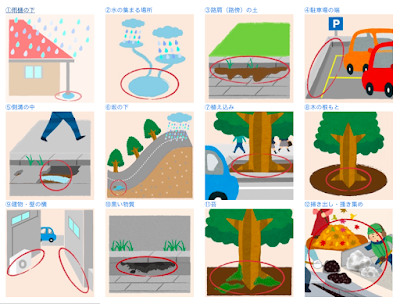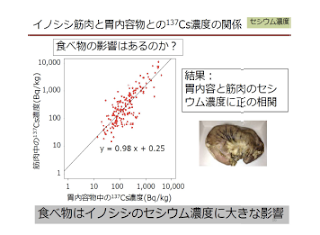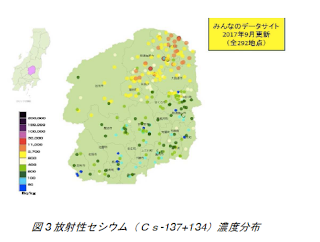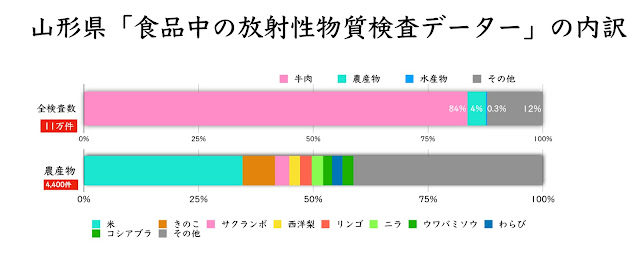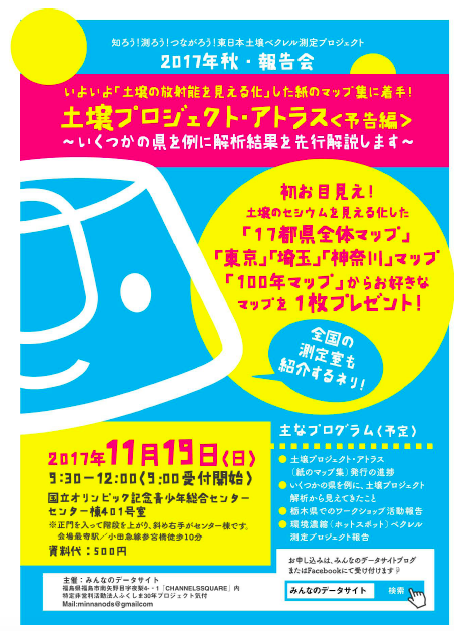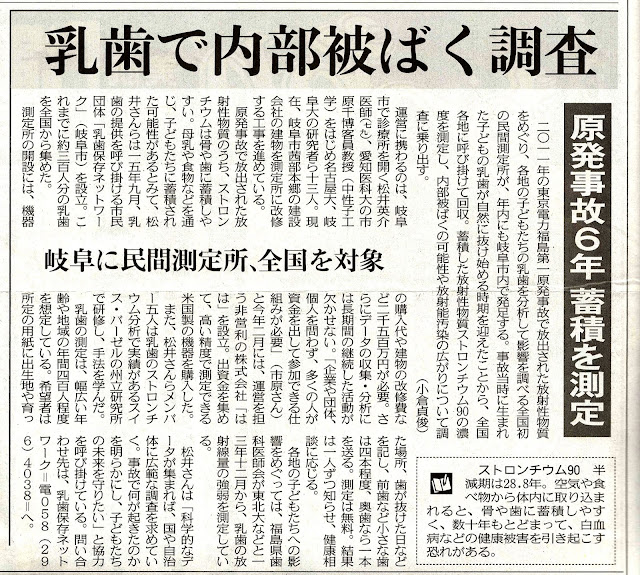About the data measurement center of Japan 's first dental measurement station for measuring strontium in Japan 's primary teeth (Gifu), which also includes the “Tokai Net Citizen Radioactivity Measurement Center (C-Lab)”, which is one of the manager's data sites . Articles were published on Chunichi Shimbun (September 17, 2017, morning newspaper) and Tokyo Shimbun (October 4, 2017, morning newspaper social aspect).
During the coming soil project debriefing session on November 19, C Lab Onuma Koichi will be introduced to this milk tooth preservation network, and it is also planned to distribute explanatory materials and kits for tooth tooth preservation. Please come to the briefing session!
● The details of the November 19 soil project briefing session are here
● If you are interested in measuring strontium in milk teeth and raising funds, please contact the milk teeth preservation network directly. Breast tooth preservation network = 058 (296) 4038
It is an introduction of the following articles.
* Transcribe the text of the Chunichi Shimbun article.
2017. 9.17 Chugoku Shimbun morning paper page
Survey on internally exposed milk teeth
First private measuring station in Gifu
The country's first private measuring station will be launched in Gifu Prefecture by the end of the year by analyzing the milk teeth of children in various regions and examining the effects by examining radioactive materials released during the 2011 Tsurugi Fukushima Daiichi Nuclear Power Plant accident. At the time when the natural teeth of the child born at the time of the accident began to come off naturally, we called out and collected all over the country. Measure the concentration of the accumulated radioactive material Strontium 90 , and start investigation on the possibility of internal exposure and the spread of radioactive contamination. (Ogura Yoshitoshi)
Fukushima accident received children of the whole country
They are managed by Dr. Eisuke Matsui ( 79 ) who opens a clinic in Gifu City, Chihiro Ichihara visiting professor at Aichi Medical University (neutron engineering) and 13 researchers at Nagoya University and Gifu University . Currently, we are in the process of rebuilding the building of a construction company in Gifu City Ayabe Hongo to a measuring station.
Among radioactive substances released in the nuclear accident, strontium is likely to be accumulated in teeth and bones. Such as the through breast milk and food, was established to see that there is a possibility that has been accumulated in the children, Matsui et al., September 15, years, civil society organizations, which call for the provision of entrance examination "baby teeth save network" the (Gifu City). To date, about 300 milk teeth have been collected from around the country.
The establishment of the measuring station requires 25 million yen, including equipment purchase and building repair costs . Furthermore, long-term continuous activities are essential for data collection and analysis. "We need a system that allows a large number of people, regardless of companies, individuals and individuals, to take out funds and participate," (Mr. Ichihara) established in February this year a non-profit corporation "Haha" to handle operations. I raised my capital and bought a US-made crisis that can be measured with high accuracy.
In addition, Matsui et al. 'S five members trained at the state laboratory in Basel, Switzerland, which has a track record in strontium analysis of primary teeth, and learned methods.
The measurement of the milk tooth assumes about 400 people of a wide age and area a year . The applicant notes the place of birth, the place where he / she grew up, the day when he / she lost his teeth, etc. on a predetermined sheet of paper, and sends about 4 small teeth including the front teeth and 1 back tooth. Measurement is free. The results will be informed one by one, and health counseling will be provided.
On the impact on local children, from Fukushima Prefecture Dental Association is Tohoku University, such as the 13 December, measures the intensity of the radiation dose of baby teeth.
Mr. Matsui is calling for cooperation, "If scientific data are gathered, we will ask the national and local governments for extensive research. We will clarify what happened in the accident and protect the future of our children." For inquiries, please go to the Dental Tooth Conservation Network = 058 (296) 4038 .
● strontium 90 half-life of 28.8 years. If it is taken into the body from air or food, it will easily accumulate in bones and teeth, and it may last for several decades and cause health damage such as leukemia. 
